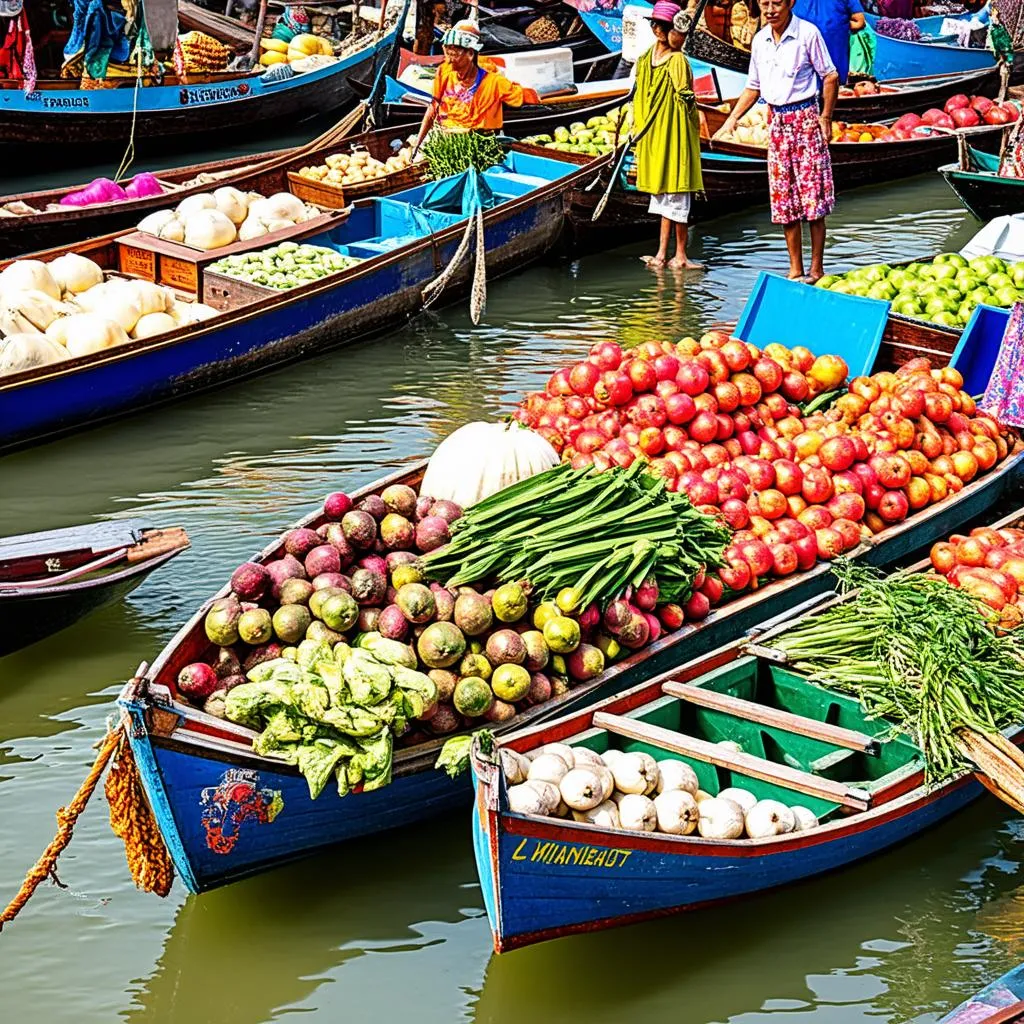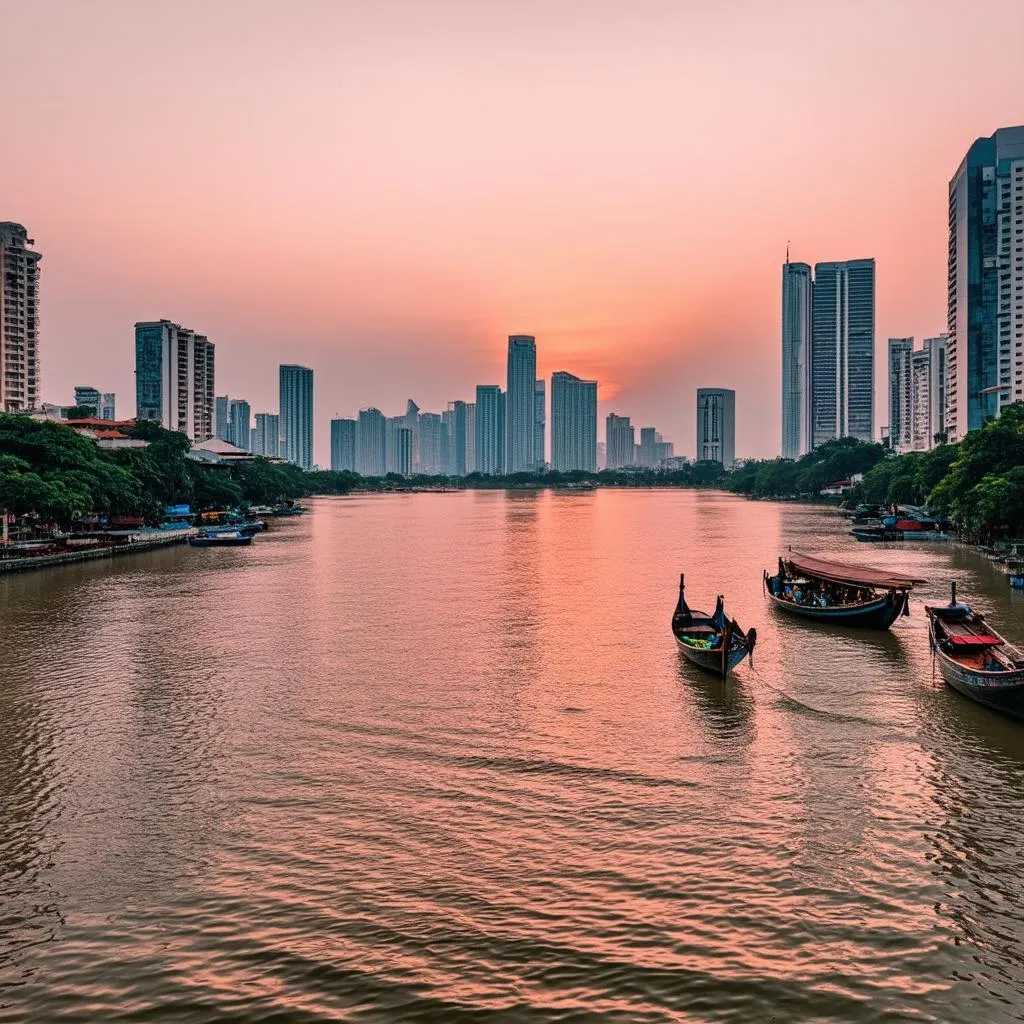“The Mekong whispers tales of wonder,” my grandmother used to say, her eyes twinkling like the river at sunset. That’s how I felt stepping onto a boat in Can Tho, the heart of the Mekong Delta in Vietnam. The air hummed with life, the scent of tropical fruits hung heavy, and vibrant green rice paddies stretched as far as the eye could see. If you’re seeking an authentic Vietnamese experience, a journey to Can Tho is a must.
Exploring the Venice of Vietnam
Can Tho is a city interwoven with waterways, earning it the nickname “Venice of Vietnam.” But beyond the poetic comparison lies a world of vibrant floating markets, ancient pagodas, and charming villages seemingly untouched by time.
Floating Markets: A Feast for the Senses
Cai Rang, the largest floating market in the Mekong Delta, is a symphony of sights and sounds. Imagine hundreds of boats laden with exotic fruits like dragon fruit and rambutan, their reflections dancing on the water. Here, you can bargain for the freshest produce or simply soak in the lively atmosphere.
Phong Dien, a smaller, more traditional market, offers a glimpse into local life. As you glide through the narrow canals, you’ll encounter vendors selling everything from handcrafted souvenirs to steaming bowls of “hu tieu,” a regional noodle soup.
Tip: Arrive early in the morning to experience the markets at their bustling best.
Religious Sites: A Glimpse into Vietnamese Spirituality
Munirangsyaram Pagoda, a stunning Khmer temple, showcases intricate carvings and vibrant colors. This sacred site is a testament to the region’s diverse cultural tapestry.
Ong Temple (Quan Cong Temple), a Chinese-influenced temple, is dedicated to the God of Wealth. According to Feng Shui principles, visiting this temple is believed to bring good fortune and prosperity.
Rural Charms: The Heart and Soul of the Mekong
My Khanh Tourist Village, a short boat ride from Can Tho, offers a tranquil escape. Explore the lush fruit orchards, try your hand at traditional crafts, or simply relax and enjoy the peaceful ambiance.
Con Son islet, just 4km from Can Tho City, is a peaceful haven with charming villages and historical relics. Legend has it that the islet’s unique shape, resembling a dragon lying by the Hau River, brings good luck and prosperity to the region.
 Can Tho Floating Market
Can Tho Floating Market
Planning Your Can Tho Adventure
Getting There and Around
- By Air: Can Tho International Airport (VCA) connects to major cities in Vietnam and Southeast Asia.
- By Bus: Frequent buses run from Ho Chi Minh City and other destinations.
- By Boat: Explore the Mekong Delta by taking a scenic boat trip from Ho Chi Minh City.
- Getting Around: Motorbike taxis (xe om), taxis, and bicycles are readily available for exploring the city and surrounding areas.
Where to Stay
Can Tho offers a range of accommodation options, from budget-friendly guesthouses to luxurious riverside resorts.
Best Time to Visit
The best time to visit Can Tho is during the dry season, from November to April. However, the rainy season (May to October) offers a different perspective, with lush green landscapes and fewer crowds.
Frequently Asked Questions
Q: What is the currency in Can Tho?
A: The currency in Vietnam is the Vietnamese Dong (VND).
Q: Do I need a visa to visit Can Tho?
A: Visa requirements vary depending on your nationality. Check with your local Vietnamese embassy or consulate for the latest visa regulations.
Q: What language is spoken in Can Tho?
A: The official language is Vietnamese, but English is widely spoken in tourist areas.
 Can Tho Riverside
Can Tho Riverside
Don’t Miss Out!
A journey to Can Tho is a journey to the heart of Vietnamese culture and hospitality. For more travel tips and information about exploring the Mekong Delta, visit travelcar.edu.vn. Your Mekong Delta adventure awaits!
Have you experienced the magic of the Mekong Delta? Share your stories in the comments below!